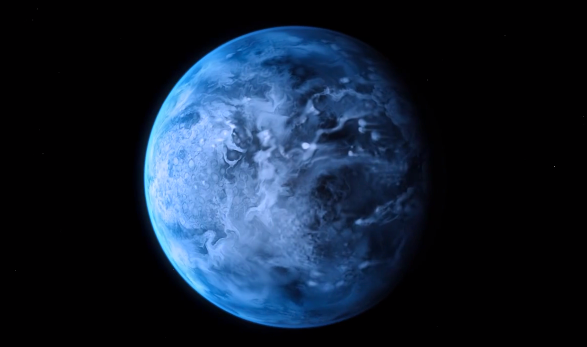There s a blue planet where it rains glass it s 63 light years away and is a gas giant with a daytime temperature of 2 000 degrees fahrenheit where it possibly rains liquid glass sideways amid 4 500 mph winds

There’s a blue planet where it rains glass

Did you know that there’s a planet located 63 light years away from us where it rains glass? This incredible phenomenon takes place on a gas giant called HD 189733b, which bears a striking resemblance to our own Earth. However, the similarities end there, as this distant planet experiences extreme conditions that are beyond our imagination.
HD 189733b is a gas giant, meaning it is primarily composed of gases, similar to Jupiter or Saturn in our own solar system. What sets it apart is the unique weather patterns that exist on this distant planet. Despite its distance from us, scientists have managed to gather astonishing details about its atmospheric conditions.
With a daytime temperature soaring up to a scorching 2,000 degrees Fahrenheit, HD 189733b is not a place for the faint-hearted. The atmosphere is constantly battered by ferocious winds reaching speeds of approximately 4,500 miles per hour (7,200 kilometers per hour). These incredibly high winds would make any hurricane on Earth seem like a gentle breeze.
But what makes this planet truly intriguing is its peculiar glass rain. In the midst of these blistering conditions, liquid glass rain is believed to fall sideways in HD 189733b’s atmosphere. This incredible phenomenon occurs due to the planet’s extreme heat and wind speeds. The glass rain is essentially molten silicate particles that have been heated to such high temperatures that they turn into liquid glass.

Scientists have indirectly observed these glass rain showers by carefully studying the planet’s vibrant blue color. The blue hue is due to the presence of silicate particles in the atmosphere, which reflect blue light more than any other color.
Despite its mesmerizing appearance, HD 189733b is definitely not a place suitable for exploration or human habitation. The extreme temperatures and toxic atmosphere make it inhospitable to life as we know it. However, by studying planets like these, scientists gain valuable insights into the diverse environments that exist beyond our solar system.
Moreover, the discovery of this glass rain phenomenon raises intriguing questions about the nature of exoplanetary atmospheres. It challenges our understanding of weather patterns and materials that can exist in extreme conditions. As technology continues to advance, scientists hope to uncover more secrets about these distant planets and their unique features.
In conclusion, HD 189733b is a mesmerizing and yet hostile planet located 63 light years away from Earth. Its blue appearance, glass rain, and extreme weather conditions make it a captivating subject of scientific study. While we may never set foot on this distant gas giant, its existence serves as a reminder of the extraordinary diversity that exists in our vast universe.
Source: CNN
Related Posts
Quick Links
Legal Stuff

